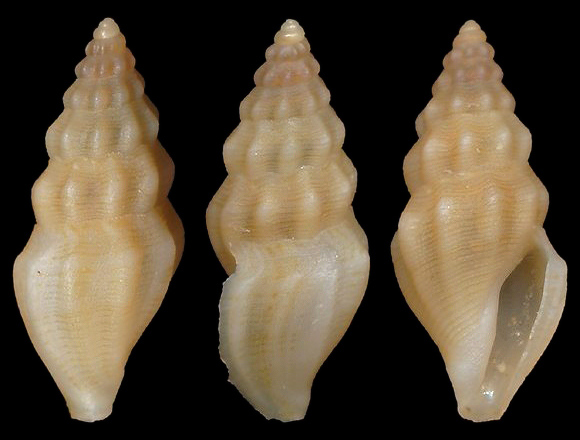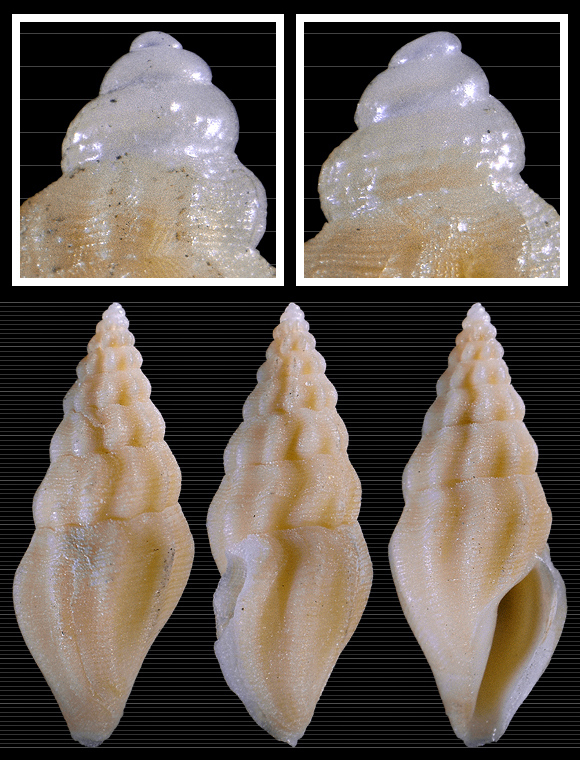
Predator from circalittoral to continental shelf.
Basionym: Cythara atlantidea.
Collected here on soft bottoms with a recent coralligen cover: « biocoenosis C (sensu Pérès & Picard, 1964) », according to Smriglio & al., 2007, who write: « We assume that the Mediterranean specimens of B. atlantidea derive from the nearby Atlantic Ocean, passively drifting through the Straits of Gibraltar by the eastwards surface current as meroplanktonic larvae and metamorphosing when favorable conditions are encountered. The planktotrophic protoconch of this turrid fits well within this hypothesis. The finding of eight specimens of B. atlantidea from four localities off the Spanish coast (Alborán Sea) implies an extension of the range of this species, that can now be added to the Recent Mediterranean malacofauna. The collecting depth and the hosting biocoenosis are suggesting that it is a circalittoral species. » As these specimens, however, were collected by fishing boats and not research vessels, their records needed confirmation.
This pictured specimen was dredged « at 350-500m deep, off Estepona », Málaga, Andalucia, S. Spain. 7,5mm. Fished after 2007 but obtained as a by-catch and not collected in scientific conditions, it could not therefore be used as an evidence to substantiate the presence of the species in Alborán Sea, until it was ascertained that Bela clarae Peñas & Rolán, a species from Catalunya, was a junior synonym (2008) of atlantidea. Mariottini & al. (2012) having established this synonymy, Bela atlantidea is now a species formally present in Mediterranean.
This pictured specimen was dredged « at 350-500m deep, off Estepona », Málaga, Andalucia, S. Spain. 7,5mm. Fished after 2007 but obtained as a by-catch and not collected in scientific conditions, it could not therefore be used as an evidence to substantiate the presence of the species in Alborán Sea, until it was ascertained that Bela clarae Peñas & Rolán, a species from Catalunya, was a junior synonym (2008) of atlantidea. Mariottini & al. (2012) having established this synonymy, Bela atlantidea is now a species formally present in Mediterranean.

Synonym clarae Peñas & Rolán, 2008, who write:« Shell […] monochrome, of an uniform cream colour, tending towards light brown, not shiny; in some specimens the ribs are slightly lighter; without any colour band. Protoconch […] shiny, with a smooth core of 84µm, and about two and a quarter whorls, slightly lighter coloured than the teleoconch […] The protoconch is smooth at the beginning; in the last whorl, some axial ribs barely appear under the suture and, in the last half whorl, there are about 22 of them, […] with some inconspicuous spiral cords. » – Peñas, Rolán & Ballesteros: “Segunda adición a la fauna malacológica del litoral de Garraf (NE de la Península Ibérica)”, Iberus vol. 26(2), Barcelona 2008, p.28-30. – 50-60m deep, Gibraltar Strait. 10mm.